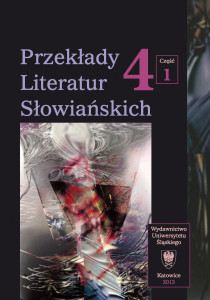Stereotypes in artistic translation
Volume 4, Part 1, is devoted to the presence of translation stereotypes in artistic translation. Stereotypes, as well as reconstructions of stereotypes from the source culture, arise in a work as a consequence of translation, and testify to the fact that different cultures are perceived as separate monads in a multicultural world. The interpretation of the figure of the protagonist, the community with its culture, the foreign mindset, worldview, aesthetic, and emotional preferences all depend on the translator’s ability to identify stereotypes, which in turn enables successful intercultural communication conducive to the discovery of the other in ourselves and of ourselves in the other. Contributors to this volume examine translations of Bulgarian, Croatian, Czech, Macedonian, Serbian, Slovakian, Slovenian, and Polish literatures, seeking to identify the origins of the translation barriers they contain. It is the reader who passes a critical judgment on the presence of stereotypes in the original literary work and its translation, placing his or her interpretations of them into the receiving culture, which results in the creation of reception stereotypes. The social operation of reception stereotypes transcends literature thanks to its cognitive and persuasive functions. Articles published in this volume address various stereotypes and their translations. Contributors examine the translation of literary texts which contain stereotypes and/or examples of destereotypization in translations of Polish literature into Czech, Macedonian, Slovakian, and Slovenian, and of Bulgarian, Croatian, Czech, Serbian, and Slovakian literatures into Polish. The articles have been arranged by topic into three sections under the following headings: 1. The Role of Stereotypes in Culture (within which they are further differentiated as “gender stereotypes” and “the peripheries of culture”); 2. National Stereotypes; 3. Stereotypes of Reception of the typical varieties, and in particular those which concern valuation, leading to the subtitle, “In the Sphere of Valuation.” The target readers of this publication are scholars of Slavic literatures and cultures (including Polish), students, and whoever might be interested in broadening their knowledge of Slavic cultures.
See entire issue:









